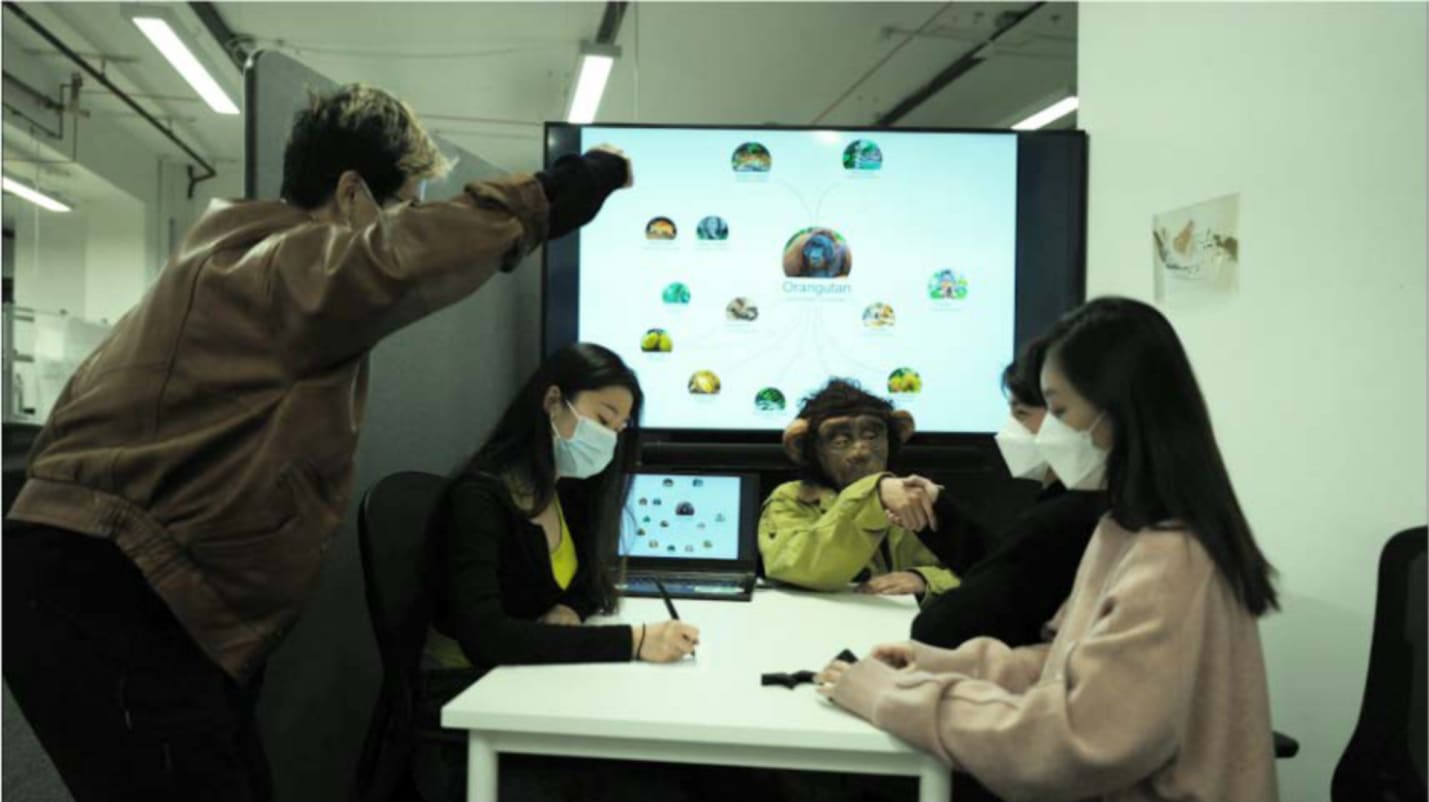Donghao Xie, a digital artist, and environmental architect like to realize his thesis and imagination, and think through virtual and physicality. His works involve painting, virtual scenes, writing, performance, and installation art, showing a vision of the future and exploring the symbiotic relationship between society and the ecosystem that nourishes us.
Donghao Xie


As the impact of humans on the planet becomes too great to ignore, from external environmental destruction to the crisis of human perception, it becomes especially important to create an alternative perspective in society, which requires us to reconsider our relationship with the environment, non-humans, and our view of being human. Are we human? What are the differences and similarities between humans and non-humans? This thesis intends to confront anthropocentrism by questioning our long-established perceptions of non-humans from the perspective of our close human relative, the orangutan, before transitioning to other non-humans in the ecosystem, recognizing that they have the same values. This thesis makes use of theories of ‘kinship’ and ‘Vitalist Materialism’ to discover what humans have ignored from apes and how to see life (other nonhumans) better, and propose a hypothesis:
Through the cultivation of Assemblage Thinking or Response-ability in our mind and body, humans may pay more attention to and respond to the different narratives of other species or non-humans, leading to changes in human intentionality, behavior, and a cultural ratchet effect through cooperation and cultural learning. This promotes more ‘Ecological Sensitivity’ in body and mind, which is like an abstract evolution that can heal and balance our fragmented worldview.
Through this project, I chose Ecological performance and some Experimentations to transcend my own limitations of perception to achieve more ecological sensitivity and develop my Assemblage Thinking to respond to other entities, documenting the process through drawings and films.


